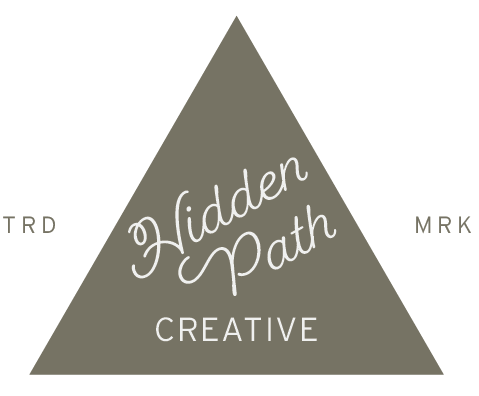The Unsexy Side of Packaging: 5 Things Most Designers Skip (and Why You Can’t)
You’ve probably seen it: a beautifully designed label that totally misses the mark when it comes to real-world readiness.
It looks good… until you realize the barcode is too small, the FPLA-required copy is missing, and the net weight? Nowhere to be found.
Here’s the truth:
Most designers focus on the pretty parts of packaging, but if your label isn’t compliant, functional, and ready for retail, it’s not going to perform.
That’s where a lot of product-based founders run into trouble. They think they’ve checked the packaging box, only to hit a wall when they try to scale.
Let’s talk about the parts of packaging that most designers skip, and why you absolutely can’t.
1. Barcode Placement + Sizing
It’s not enough to drop a barcode onto your label. Retailers and fulfillment centers require specific sizing, spacing (known as the “quiet zone”), and placement. If your barcode is blurry, too small, or tucked into a corner where it can’t be scanned, you’re setting yourself up for headaches.
I’ve seen products rejected by Amazon FBA warehouses or delayed at 3PL centers simply because the barcode didn’t meet requirements. Even worse? Catching it after you’ve printed thousands of units. Once, in my retail days, I even had to personally sticker over some barcodes that were missing a number. Never again!
A properly placed, accurately sized barcode means faster processing, fewer errors, and a product that flows seamlessly from your hands to your customer’s.
2. FPLA or FDA Copy Requirements
If you’re in food, skincare, supplements, or anything consumable, compliance isn’t optional—it’s essential. From ingredient declarations to specific wording for claims (“moisturizing” vs. “heals”), FPLA, FDA, and FTC guidelines dictate exactly what must appear on your packaging.
I’ve helped founders navigate tricky gray areas, like when a skincare label crosses into a “claim” or when a beauty benefits needed a wordy disclaimer added to the packaging. Missing or incorrect copy doesn’t just risk a slap on the wrist—it can mean fines, forced recalls, or having to relabel every unit.
The scariest part? Most designers won’t tell you this, because they don’t know—or don’t want to touch it.
3. Net Weight Declaration
Your net weight isn’t a nice-to-have; it’s legally required on most packaged goods sold in the U.S. (and internationally, too).
Not only does it have to be on the label, it has to follow strict formatting rules—right down to the abbreviation (e.g., “NET WT. 8 OZ (227g)”), font size, and placement relative to other elements.
You don’t want to be stuck reprinting because the net weight is missing or incorrectly formatted. It’s a small detail, but it carries big consequences.
4. Ingredient Formatting
It might sound straightforward: list what’s inside. But did you know ingredients often have to be listed in descending order by weight? Or that certain categories require INCI names instead of marketing-friendly words?
In skincare or beauty products, for example, using “Shea Butter” instead of its correct INCI name “Butyrospermum Parkii (Shea) Butter” could flag your packaging as non-compliant.
Most designers don’t know this. I will guide you through reviewing your ingredient formatting, because every word on your label needs to earn its spot and meet regulations.
5. Messaging Hierarchy That Works on a Shelf
Designing a label is more than making it “pretty.” It’s about creating a clear path for the eye—so potential buyers instantly know:
✔️ What the product is
✔️ Who it’s for
✔️ Why it’s worth picking up
If your logo dominates but your product name is buried, or if key benefits are lost in clutter, you risk confusing buyers or making them overlook your product completely.
A strategic messaging hierarchy helps your packaging sell by telling your brand’s story in a split second—and it’s one of the reasons my clients see immediate improvements in confidence, shelf appeal, and even wholesale interest.
Why This Stuff Matters (Even If You’re Not in Target Yet)
It’s easy to think:
“I’ll figure that out when I’m bigger.”
But here’s what I’ve seen time and again:
Founders pitch their product, get interest from a boutique or platform like Faire—and then scramble when they realize their packaging isn’t compliant or retail-ready.
That scramble costs time, money, and momentum. I’ve seen brands delay launches, miss out on shelf space, or rush to reprint at the worst possible time.
How I Handle It (So You Don’t Have To)
In every project I take on—whether it’s a custom rebrand or a one-day Packaging Pronto session—I handle the technical details most designers avoid.
That means:
Barcodes are sized and placed to scan
Weight and ingredient formatting follows standards
Files are set up for print and production
And nothing gets designed without real strategy behind it
Because packaging should move your product forward, not leave you second-guessing whether it’s “good enough.”
Ready to Skip the Guesswork?
If you’re prepping for retail or launching on wholesale platforms and want packaging that performs—not just looks good—I’d love to help.
My Packaging Pronto day is designed to get your packaging compliant, strategic, and shelf-ready in a single, focused day.
📦 Learn more about Packaging Pronto here or reach out if you want to make sure your packaging can keep up with your growth.
At Hidden Path Creative, our mission is to support product-based businesses with a standout packaging design that grows their brand recognition and sales.
If you want to work together, please drop us a line here. We love connecting the creators of innovative products.
Oh, and come say hi on Instagram, and join a community of like-minded product entrepreneurs!

